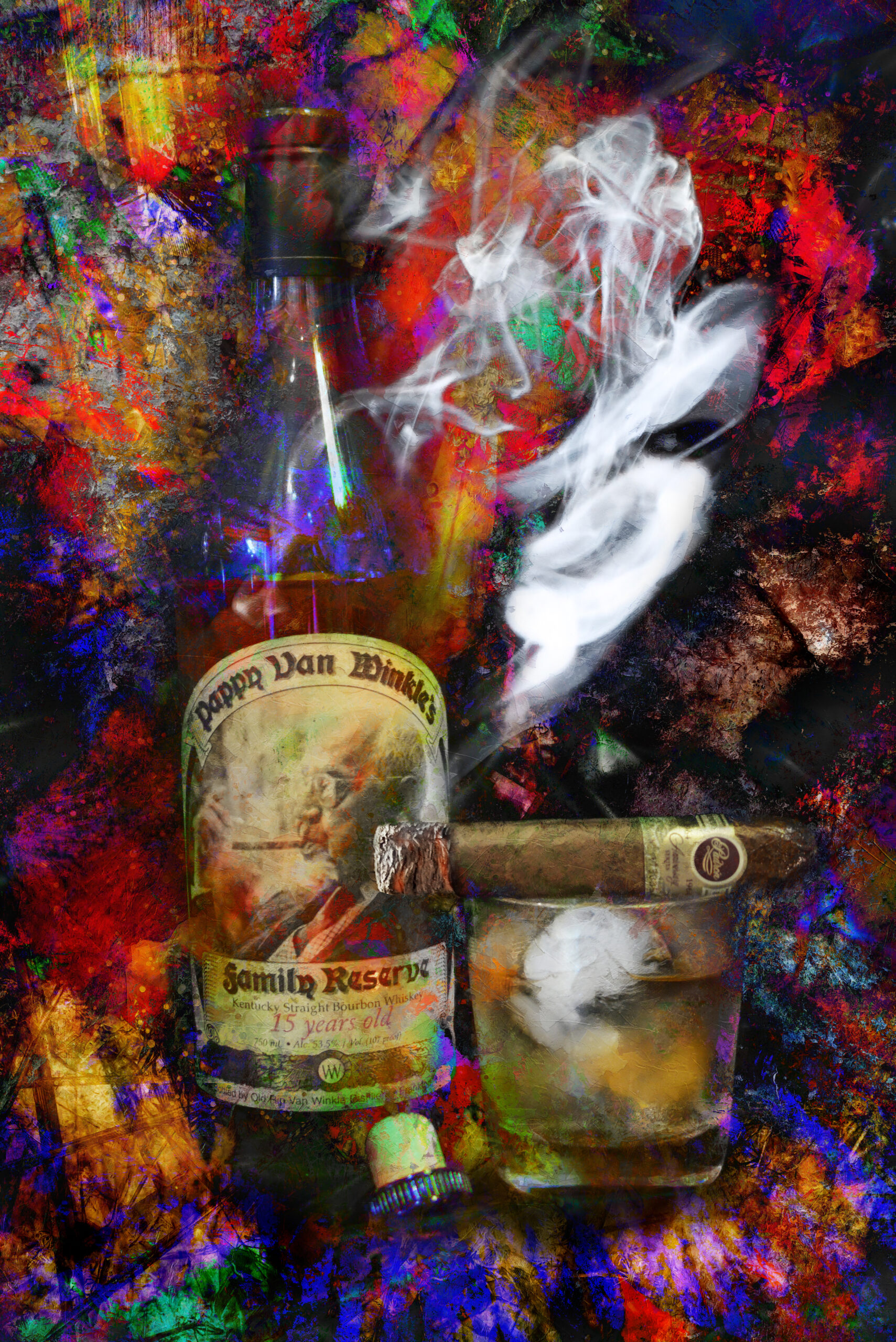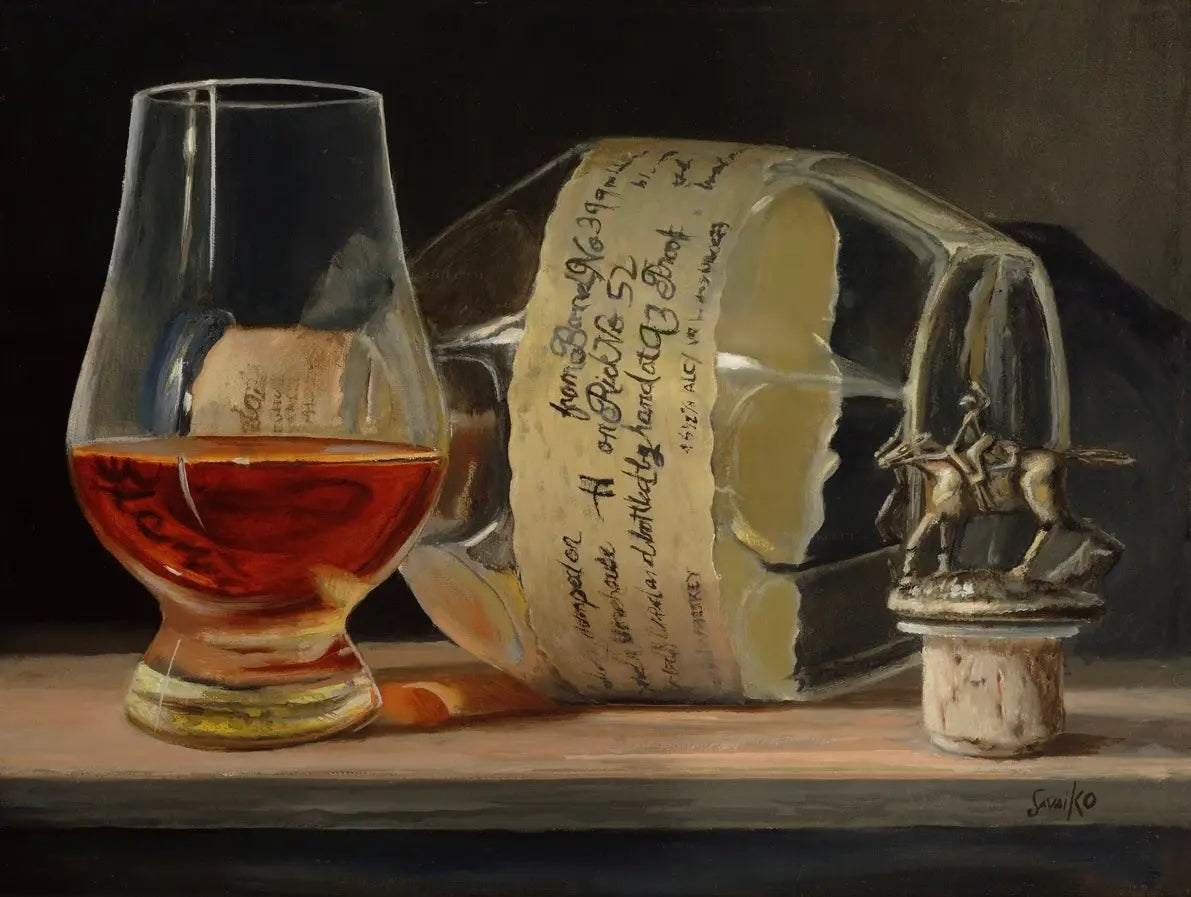Bourbon Art in Contemporary Culture: Where Tradition Fulfills Technology
Wiki Article
Capturing the Significance of Scotch Art Via Special Visual Representations and Styles
The art of whiskey expands beyond the fluid itself, manifesting through a range of aesthetic representations that encapsulate its fabled heritage and workmanship. What continues to be to be uncovered is exactly how these advancing styles reflect not only the scotch itself yet additionally the changing landscape of artistic interpretation. Limited Edition.The Background of Bourbon Art

As whiskey production spread, so also did the desire to raise its experience via art. From the elaborate inscriptions on early casks to the intricate labels of contemporary containers, each element shows an one-of-a-kind artistic vision, working as an aesthetic story of the whiskey's heritage.
In the 18th and 19th centuries, the surge of the commercial revolution further enhanced whiskey art, resulting in cutting-edge product packaging and marketing that caught consumer focus. Musicians and developers started experimenting with visual appeals, imbuing whiskey-related imagery with symbolic definitions that shared ideas of craftsmanship, community, and practice.
Today, scotch art remains to advance, mixing traditional methods with contemporary art forms. Whiskey Art. This ongoing dialogue between the spirit and its visual depiction emphasizes the long-lasting bond in between scotch and culture, enhancing the overall experience for enthusiasts worldwide
Iconic Bottle Designs
While numerous variables add to the attraction of scotch, iconic bottle designs play a pivotal role fit customer understanding and enhancing the overall experience. The aesthetic discussion of scotch bottles is not just a visual factor to consider; it acts as a bridge between the consumer and the item, stimulating emotions and establishing assumptions.Distinct forms, products, and closures can raise a scotch brand's identification, making it promptly recognizable on crowded shelves. The classic Glenfiddich bottle, with its sophisticated conical silhouette, conveys a sense of custom and workmanship, while the strong, modern layout of the Balvenie bottle shows development and sophistication. In addition, the use of tinted glass or distinct appearances can suggest the high quality and personality of the whiskey within.
Legendary layouts typically include aspects of social heritage, signifying the brand name's history and link to its roots. Brand Names like Jack Daniel's utilize a simple, durable design that reverberates with its American bourbon heritage. Eventually, the influence of bottle style expands beyond simple capability; it encapsulates the essence of the brand name, welcoming customers to delight and discover in the rich tapestry of scotch society.
Tag Artwork and Branding
Bottle designs often establish the phase of what consumers can expect, yet tag artwork and branding play an equally significant duty in connecting a scotch's identity. The label works as the very first point of contact in between the item and the customer, encapsulating the essence of the Extra resources bourbon within its visual components.Effective tag artwork incorporates typography, shade, and imagery to produce a narrative that reverberates with the brand's heritage and target market. A label including vintage font styles and intricate pictures might evoke a feeling of practice and craftsmanship, appealing to aficionados. In contrast, strong shades and modern style components might bring in a more youthful market looking for development and exhilaration.


Digital Photography and Visual Storytelling
Capturing the significance of scotch through digital photography and visual storytelling is an art kind that raises the brand experience. This tool transcends plain product representation, diving into the detailed stories that surround each container. By employing engaging imagery, digital photographers can evoke feelings that resonate with customers, inevitably forging a deeper link to the scotch brand name.Visual storytelling in whiskey photography frequently uses abundant appearances, illumination, and make-up to highlight the distinct characteristics of the spirit. The interaction of light and darkness can accentuate the brownish-yellow hues of scotch, while the selection of background aspects-- such as rustic barrels or elegant glass wares-- can enhance the brand name's heritage or way of life organizations.
Additionally, capturing the ceremonial aspects of scotch intake, from the putting to the tasting, invites visitors right into a sensory experience, allowing them to envision the tastes and aromas that await. Each photo not just showcases the item but also narrates of workmanship, more tips here practice, and the minutes that whiskey can enhance - Realism Art. Thus, photography ends up being an effective tool in verbalizing the identity of scotch brand names, placing them within the more comprehensive social landscape
Arising Fads in Bourbon Art
The evolution of bourbon art is increasingly formed by modern patterns that reflect more comprehensive social shifts and customer preferences. This shift not only highlights the relevance of sustainability however also boosts the story bordering whiskey manufacturing.Furthermore, digital art has actually surged in appeal, permitting innovative depictions of scotch. Musicians are leveraging innovation to craft immersive experiences, such as augmented truth installations that involve audiences and give a deeper understanding of bourbon's cultural value. This pattern additionally encompasses social media platforms, where aesthetically striking content amasses attention and promotes community among fanatics.
Moreover, cooperations between scotch brand names and artists are coming to be more widespread. These collaborations yield limited-edition product packaging layouts and special art work that commemorate both the craftsmanship of scotch and the creative thinking of artists. As scotch art proceeds to evolve, these emerging fads will definitely shape its future, fostering a dynamic junction of culture, sustainability, and technology within the scotch neighborhood.
Verdict
To conclude, the art of scotch encompasses a diverse variety of graphes that reflect its rich heritage and craftsmanship. From renowned bottle styles and complex tag art work to engaging digital photography, each component adds to a wider narrative that enhances the consumer's experience. As emerging trends, such as digital art and sustainability, continue to form this imaginative landscape, the complex identification of bourbon continues to be a sustaining resource of social connection and exploration.

In conclusion, the art of bourbon encompasses a varied array of visual representations that mirror its abundant heritage and workmanship.
Report this wiki page